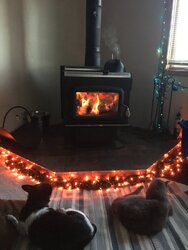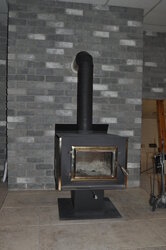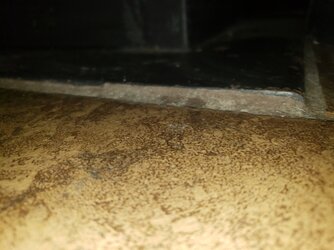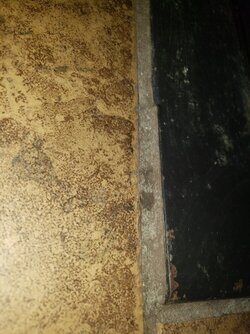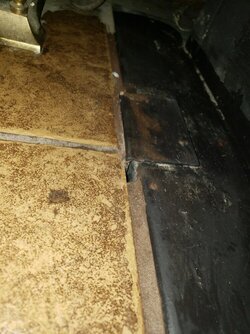Hi all,
I've been lurking for some time on the forums and am constantly referencing them during my wood/ wood heating research. Thought it was time to at least make a post....
Wood heat's been a fixture my entire life, but I only personally began burning on a regular basis when my wife and I bought our current home about 6 years ago. The house is split entry ranch style home built in 1988-89, with about 1800sq/ft of living space per level. Our "primary" heat (30 y/o air source heat pump and electric furnace) has not been used once, aside from a week we were away in Florida 5 years ago. People are often amazed (even fellow wood burners) to hear that I've never once resorted to turning on the furnace with just my "little" stove as heat. I rarely run the furnace fan or any other means of circulation, but the heat seems to get through the house pretty well. The house (on average) rarely will drop below 70 degrees. The bedroom furthest from the stove will sometimes drop to about 62-63 degrees when the door is closed all night. We are currently experiencing our first winter since replacing all the 30 y/o windows with triple pane windows. It has made the job of keeping the temp up MUCH easier (or so it seems). A week straight of -20 used to make it very hard to keep up, however it doesn't seem to be an issue anymore.
The woodstove in question is a 1988 SeeFire model 2100s, rated at 70,0000 btu/h. The home's previous owners warned not to use it as it "worn out". However, I replaced all the firebrick, and other than a slightly degrading secondary burn tube and a pretty warped baffle, it has seemed to perform pretty well over the last 6 years. The last few years, as I've refined my routine, it has run basically for 6 months straight during the winter, never needing a re-light.
Wood use ranges from 14 to 20 face cord a season. Mostly ash and elm, however I do go through a fair bit of soft maple (Manitoba, red and silver) and other soft woods (poplar, tamarack) and even the odd bit of white cedar and sumac. Occasionally I'll have other hardwoods mixed in (sugar maple, oak, apple, beech, walnut) but the EAB and Dutch Elm Disease means I'll continue to burn a lot of ash and elm. Everything is taken from my own modest woodlot (5 acres) or father's or father-in-law's farms (400 and 100 acres respectively with various fence lines, woodlots, etc.).
I've considered replacing the woodstove for sometime, but it's hard to justify it when it's still doing the job seemingly well and safely. I've got my eye on a Drolet HT2000 for when the time comes. I eventually want to install a indoor wood boiler/gassifier of some type, but I think that will have to wait until if/when we build new on some property as it would be hard to justify and retrofit in our current home.
Anyway, Cheers!
I've been lurking for some time on the forums and am constantly referencing them during my wood/ wood heating research. Thought it was time to at least make a post....
Wood heat's been a fixture my entire life, but I only personally began burning on a regular basis when my wife and I bought our current home about 6 years ago. The house is split entry ranch style home built in 1988-89, with about 1800sq/ft of living space per level. Our "primary" heat (30 y/o air source heat pump and electric furnace) has not been used once, aside from a week we were away in Florida 5 years ago. People are often amazed (even fellow wood burners) to hear that I've never once resorted to turning on the furnace with just my "little" stove as heat. I rarely run the furnace fan or any other means of circulation, but the heat seems to get through the house pretty well. The house (on average) rarely will drop below 70 degrees. The bedroom furthest from the stove will sometimes drop to about 62-63 degrees when the door is closed all night. We are currently experiencing our first winter since replacing all the 30 y/o windows with triple pane windows. It has made the job of keeping the temp up MUCH easier (or so it seems). A week straight of -20 used to make it very hard to keep up, however it doesn't seem to be an issue anymore.
The woodstove in question is a 1988 SeeFire model 2100s, rated at 70,0000 btu/h. The home's previous owners warned not to use it as it "worn out". However, I replaced all the firebrick, and other than a slightly degrading secondary burn tube and a pretty warped baffle, it has seemed to perform pretty well over the last 6 years. The last few years, as I've refined my routine, it has run basically for 6 months straight during the winter, never needing a re-light.
Wood use ranges from 14 to 20 face cord a season. Mostly ash and elm, however I do go through a fair bit of soft maple (Manitoba, red and silver) and other soft woods (poplar, tamarack) and even the odd bit of white cedar and sumac. Occasionally I'll have other hardwoods mixed in (sugar maple, oak, apple, beech, walnut) but the EAB and Dutch Elm Disease means I'll continue to burn a lot of ash and elm. Everything is taken from my own modest woodlot (5 acres) or father's or father-in-law's farms (400 and 100 acres respectively with various fence lines, woodlots, etc.).
I've considered replacing the woodstove for sometime, but it's hard to justify it when it's still doing the job seemingly well and safely. I've got my eye on a Drolet HT2000 for when the time comes. I eventually want to install a indoor wood boiler/gassifier of some type, but I think that will have to wait until if/when we build new on some property as it would be hard to justify and retrofit in our current home.
Anyway, Cheers!
Last edited:


